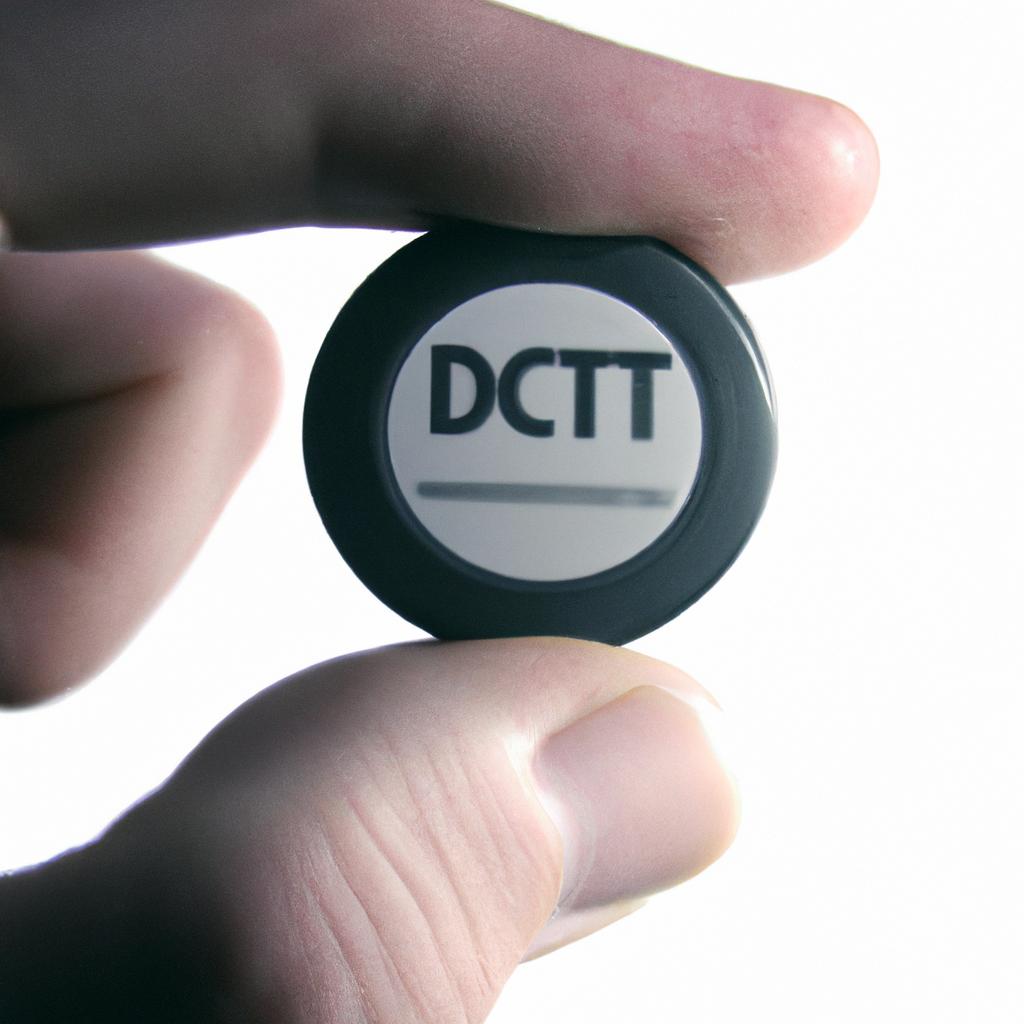Consensus Mechanisms: Blockchain Technology in Computers and Software

Blockchain technology has revolutionized various industries, enabling secure and decentralized transactions. A key component of this technology is the consensus mechanism, which ensures agreement among participants in a network regarding the validity of transactions. Consensus mechanisms play a crucial role in maintaining the integrity and trustworthiness of blockchain networks by preventing malicious activities such as double-spending or tampering with transaction records.
To illustrate the significance of consensus mechanisms, consider a hypothetical case study: a global supply chain management system powered by blockchain technology. In this scenario, multiple stakeholders including manufacturers, distributors, retailers, and consumers are involved in ensuring the smooth flow of goods from production to consumption. With traditional centralized systems, trust issues often arise due to information asymmetry and potential fraud within the supply chain. However, through implementing a consensus mechanism on a blockchain platform, all parties can collectively validate each transaction’s authenticity and ensure transparency and accountability throughout the entire supply chain process.
Consensus mechanisms have evolved over time to address different requirements and challenges faced by blockchain networks. This article explores various types of consensus mechanisms employed in computer software applications and how they contribute to establishing fault-tolerant systems that enable secure peer-to-peer interactions without relying on intermediaries or central authorities. By understanding these mechanisms’ inner workings, we can make informed decisions when selecting a consensus mechanism that best suits the specific needs of our blockchain application.
What are consensus mechanisms?
Consensus mechanisms play a crucial role in blockchain technology by ensuring the agreement and validation of transactions across multiple nodes within a network. These mechanisms establish a set of rules that all participants must follow to achieve consensus on the state of the blockchain, allowing for transparency, security, and immutability.
One example of a consensus mechanism is the Proof of Work (PoW) algorithm used in Bitcoin mining. In this case, miners compete to solve complex mathematical puzzles, with the first one finding the solution being rewarded with newly minted bitcoins. This process requires significant computational power and energy consumption but provides strong security guarantees as it becomes increasingly difficult for malicious actors to control the majority of computing resources.
To better understand the significance of consensus mechanisms in blockchain technology, consider these emotional responses:
- Trust: Consensus mechanisms enhance trust among participants by removing centralized authorities or intermediaries from transaction verification processes.
- Security: Through cryptographic algorithms and decentralized networks, consensus mechanisms ensure data integrity and protection against malicious attacks.
- Efficiency: By establishing agreed-upon rules for validating transactions, consensus mechanisms streamline operations and reduce duplication efforts.
- Decentralization: Consensus mechanisms enable peer-to-peer networks where no single entity has complete control over decision-making processes.
| Pros | Cons |
|---|---|
| Enhanced security | High energy consumption |
| Increased transparency | Scalability challenges |
| Improved fault tolerance | Longer confirmation times |
Considering these benefits and limitations associated with different consensus mechanisms can help stakeholders make informed decisions when selecting an appropriate approach for their specific use cases.
In summary, consensus mechanisms are vital components of blockchain technology that allow participants to agree on transaction validity without relying on centralized authorities. They provide robustness, security, efficiency, decentralization while addressing various challenges inherent in distributed systems. The next section will delve into why these mechanisms hold such importance within the realm of blockchain.
Why are consensus mechanisms important in blockchain?
Consensus mechanisms play a crucial role in the functioning of blockchain technology. They are responsible for ensuring that all participants within a network agree on the state of the distributed ledger, thus enabling trust and security in decentralized systems. To better understand their significance, let us explore an example scenario.
Consider a consortium of banks using blockchain to streamline cross-border transactions. Each bank maintains its own copy of the distributed ledger, recording transaction details such as sender, recipient, and amount transferred. In this case, consensus mechanisms would enable these banks to reach agreement on which transactions should be added to the shared ledger and prevent any double-spending or tampering.
There are several reasons why consensus mechanisms are important in blockchain:
- Trust: Consensus mechanisms establish trust among participants by ensuring that no single entity has control over decision-making processes or can manipulate the system for personal gain.
- Security: By requiring multiple participants to validate transactions before they are added to the blockchain, consensus mechanisms protect against malicious attacks and ensure the integrity of the data stored.
- Decentralization: Consensus mechanisms promote decentralization by distributing authority across multiple nodes within a network rather than relying on a central governing body.
- Scalability: Efficient consensus mechanisms allow for speedy validation and confirmation of transactions, making them essential for scaling blockchain networks to handle increasing volumes of data.
To illustrate further how different consensus mechanisms operate, we can examine them through a table:
| Consensus Mechanism | Example Use Case | Pros | Cons |
|---|---|---|---|
| Proof-of-Work | Bitcoin | High level of security | Requires significant computational resources |
| Proof-of-Stake | Ethereum (upcoming) | Energy-efficient | Can lead to concentration of wealth |
| Delegated Proof-of-Stake | EOS | Fast transaction confirmation | Reliance on elected delegates |
| Practical Byzantine Fault Tolerance (PBFT) | Hyperledger Fabric | Fast consensus in permissioned networks | Requires a predefined set of participants |
In conclusion, consensus mechanisms are essential building blocks of blockchain technology. They establish trust, enhance security, promote decentralization, and enable scalability within distributed systems. In the following section, we will delve into different types of consensus mechanisms to gain a deeper understanding of their functionalities and applications.
Types of consensus mechanisms
Consensus Mechanisms: Blockchain Technology in Computers and Software
In the previous section, we explored why consensus mechanisms play a crucial role in blockchain technology. Now, let us delve further into the various types of consensus mechanisms employed in this domain.
Types of Consensus Mechanisms
One example that illustrates the significance of consensus mechanisms is the Bitcoin network. Through its Proof-of-Work (PoW) mechanism, miners compete to solve complex mathematical puzzles to validate transactions and secure the network. This process ensures that all participants reach an agreement on the state of the ledger without relying on a central authority.
To better understand different consensus mechanisms, consider their key characteristics:
- Fault Tolerance: Consensus algorithms should be robust enough to handle failures or malicious behavior by some participants within the network.
- Scalability: As blockchain networks grow larger, it becomes essential for consensus mechanisms to efficiently process and confirm increasing numbers of transactions.
- Security: An effective consensus mechanism must have strong security measures to prevent fraudulent activities such as double-spending or unauthorized modifications to the blockchain.
- Energy Efficiency: With growing concerns about environmental impact, energy-efficient consensus mechanisms are gaining traction as they reduce resource consumption while maintaining network integrity.
The table below provides an overview of three popular consensus mechanisms along with their respective strengths and weaknesses:
| Consensus Mechanism | Strengths | Weaknesses |
|---|---|---|
| Proof-of-Work | High security level | High energy consumption |
| Proof-of-Stake | Energy efficiency | Potential for centralized control |
| Delegated Proof-of-Stake | Fast transaction confirmation | Limited number of trusted nodes |
While these are just a few examples, many other consensus mechanisms exist today, each designed with specific goals and trade-offs in mind. By understanding these variations, researchers can continue exploring new possibilities for enhancing the efficiency, security, and scalability of blockchain systems.
Transitioning into the subsequent section about the Proof-of-Work (PoW) consensus mechanism, we will now delve deeper into this widely known and extensively used approach.
Proof of Work (PoW) consensus mechanism
Consensus Mechanisms: Blockchain Technology in Computers and Software
Types of consensus mechanisms play a crucial role in ensuring the integrity and security of blockchain networks. One prominent example is the Proof of Work (PoW) consensus mechanism, which we will delve into shortly. Before that, let us explore some general characteristics shared by various types of consensus mechanisms.
Firstly, consensus mechanisms aim to achieve agreement among participants on the validity and order of transactions within a distributed network. They provide a decentralized approach to decision-making, reducing reliance on central authorities or intermediaries. Secondly, these mechanisms employ different algorithms and protocols to ensure fairness and prevent malicious behavior such as double-spending or tampering with transaction records. Thirdly, they require participants to contribute computational resources or stake certain assets as collateral to validate transactions and participate in the consensus process.
To illustrate these ideas further, consider a hypothetical scenario where an online marketplace wants to implement a blockchain-based payment system using a consensus mechanism. In this case:
- Participants would need to solve complex mathematical puzzles or perform computationally intensive tasks (PoW).
- Each participant’s contribution would be proportional to their computational power (PoW).
- Consensus would be reached when the majority of participants agree on the validity of transactions.
- Once achieved, the agreed-upon transactions would be added to a new block in the blockchain.
Let us now dive deeper into the Proof of Work (PoW) consensus mechanism itself before exploring other alternatives such as Proof of Stake (PoS).
Proof of Stake (PoS) consensus mechanism
Building upon the concept of consensus mechanisms, another widely used method in blockchain technology is the Proof of Stake (PoS) consensus mechanism. This alternative approach addresses some of the limitations associated with Proof of Work (PoW), offering a more energy-efficient and scalable solution.
One example that illustrates the advantages of PoS can be found in the cryptocurrency Ethereum. In 2020, Ethereum began its transition from PoW to PoS through an upgrade known as Ethereum 2.0 or Eth2. By adopting PoS, Ethereum aims to enhance its scalability and reduce energy consumption while maintaining security and decentralization.
There are several key characteristics that distinguish PoS from PoW:
- Energy efficiency: Unlike PoW, which requires extensive computational power and electricity consumption for mining blocks, PoS relies on validators who hold a certain amount of tokens within the network. Validators are chosen to create new blocks based on their stake in the system rather than their computing power.
- Security considerations: While both PoW and PoS aim to ensure secure transactions, they employ different methods. In PoW, attackers would need to control over 50% of the network’s total computing power to manipulate transactions successfully. In contrast, in a typical PoS system, attackers would need to own over 50% of all coins within the network—a much costlier endeavor.
- Scalability potential: As blockchain networks grow larger, scalability becomes crucial for handling increased transaction volumes efficiently. With its reduced reliance on computational power, PoS has shown promising potential for achieving higher scalability compared to traditional PoW systems.
| Key Characteristics | Proof of Work (PoW) | Proof of Stake (PoS) |
|---|---|---|
| Energy Efficiency | High | Higher |
| Security Considerations | Computing Power Control | Coin Ownership Control |
| Scalability Potential | Moderate | Promising |
Overall, the Proof of Stake consensus mechanism offers an alternative approach to achieve consensus in blockchain networks. Through its energy efficiency and scalability potential, PoS presents a viable solution for addressing some of the limitations associated with traditional PoW systems.
Moving forward, we will now explore another notable consensus mechanism known as Delegated Proof of Stake (DPoS). This mechanism introduces unique features that enhance efficiency and governance within blockchain ecosystems.
Delegated Proof of Stake (DPoS) consensus mechanism
Delegated Proof of Stake (DPoS) Consensus Mechanism
Example: Imagine a decentralized social media platform where users can create and share content freely. This platform aims to ensure efficiency, scalability, and security in its operations. To achieve this, the developers decide to implement the Delegated Proof of Stake (DPoS) consensus mechanism.
The DPoS consensus mechanism works by electing a group of trusted individuals or “delegates” who are responsible for validating transactions and producing new blocks on the blockchain. These delegates are chosen through a voting process conducted by token holders in the network. Once elected, these delegates take turns adding blocks to the chain based on their rank and reputation within the community.
This approach offers several advantages over other consensus mechanisms:
- Efficiency: Unlike traditional proof-of-work systems that require extensive computational power, DPoS reduces energy consumption significantly as only a limited number of delegates validate transactions.
- Scalability: With DPoS, block production is faster compared to other consensus algorithms since each delegate takes turns creating blocks. This enhances transaction throughput and reduces confirmation times.
- Security: The use of reputation-based selection ensures that only trustworthy individuals become delegates. Additionally, DPoS introduces a real-time feedback mechanism whereby token holders can replace underperforming delegates with more competent ones through voting.
| Pros | Cons |
|---|---|
| Increased Efficiency | Centralization Concerns |
| Enhanced Scalability | Potential Collusion among Delegates |
| Improved Security Through Reputation-Based Selection | Relies on Voting Participation |
The implementation of DPoS provides an effective solution for achieving decentralized governance in scenarios like our hypothetical social media platform. By employing trusted delegates who rotate responsibilities for block production, it combines efficiency, scalability, and security while minimizing resource requirements.
In summary, the Delegated Proof of Stake (DPoS) consensus mechanism allows for efficient and scalable blockchain operations while maintaining a high level of security. By electing trusted delegates, this approach ensures that the network functions smoothly and can handle increased transaction volumes without compromising decentralization. As blockchain technology continues to evolve, DPoS offers an alternative consensus mechanism with its unique advantages and considerations.
Note: This is just one example of how DPoS can be applied; actual implementations may vary in different projects or platforms.






